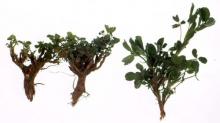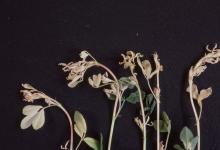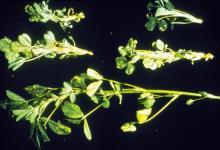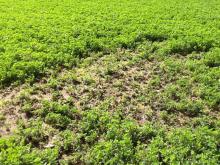Cause Ditylenchus dipsaci is a nematode that lives principally in the stem portions of plants. It can persist in soil without a susceptible crop for at least 2 years. Flooding of affected areas helps to disseminate nematodes and increase damage. Most damage is done by nematode feeding in winter.
Symptoms Diseased plants are severely stunted, and stems and leaves show distortion and basal swelling. In warm weather, "white flags" develop as leaves become distorted and turn white. Infected stems become brittle and break off easily at the crown.
Severely infected plants die. Blank spaces become evident in the field 2 or 3 years after planting and may be invaded by weeds. Damage is most apparent when growth begins in spring, especially after a warm, wet winter.
Sampling Stem nematodes infect the aboveground portions of plants but also may be found in soil. Affected plant crowns with attached stems are required for diagnosis. Take samples any time in the growing season, but late spring may be an ideal time to look for first signs of affected plants. Later these plants may be stunted and overgrown by adjacent plants or weeds and may be missed, allowing the infection to spread.
Cultural control
- Use resistant varieties. The varieties, Archer, Lahontan, Washoe, and others are usually resistant to both the stem nematode and bacterial wilt. Relative resistance ratings of varieties are provided by the National Alfalfa and Forage Alliance (alfalfa.org).
- Rotate with non-leguminous crops for 2 to 4 years, depending on severity of infection. Volunteer plants must be eliminated.
- Prevent nematode infestations by avoiding use of tail water from old alfalfa fields.
- Cut alfalfa only when the top 2 to 3 inches of soil are dry.
- Burn stubble in fall rather than spring (seed production only).
- Clean equipment before moving from infected to clean fields.





